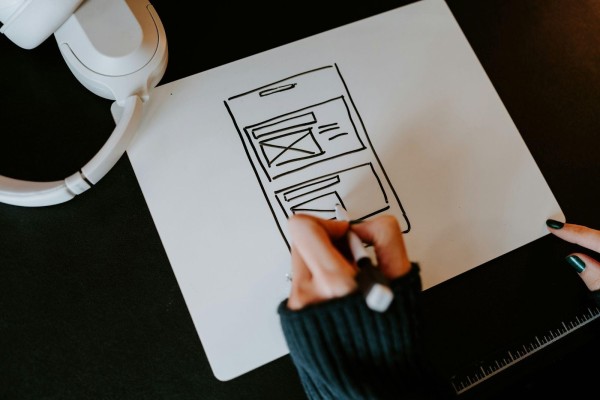Today, user experience (UX) on digital platforms is one of the most important factors that make users' interactions with our product or service smooth. However, if we cannot provide users with advanced tools to easily edit photos on our platforms, we can negatively affect customer satisfaction and loyalty. At this point, photo editor API services are offered to make our lives easier.
We can effortlessly integrate photo editor API services into our platforms and provide users with a fast, professional, and easy photo editing service. In this guide, we will discuss how the photo editor API strengthens the user experience and the subtleties of the integration process.
Enhancing UX with seamless photo editor API integration
Photo editor APIs are at the forefront of modern digital tools, providing a more satisfying experience for users when interacting with a platform. Enhancing user experience is a factor that directly affects how fluid and effective a user interface is. Reducing the complexity users face during photo editing processes is one of the cornerstones of an effective UX. In this context, photo editor APIs make photo editing faster and easier by offering streamlined editing tools.
A seamless photo editor API integration not only increases user satisfaction but also allows users to spend more time with the platform. The fact that users can effortlessly discover and use editing tools gives our platform a strong advantage in terms of user engagement techniques. With the right integration, we can increase users' repeat visits and strengthen their loyalty to our digital platforms.
Key features of a UX-friendly photo editor API
One of the most important elements that make a photo editor API UX-friendly is that it offers an intuitive interface. Users don't want to get lost in complicated menus or unnecessary steps. At this point, minimizing UX clutter allows us to direct our users most efficiently by focusing their attention only on the necessary features. Also, fast loading times prevent users from waiting impatiently and ensure that the platform creates a professional impression.
A responsive design and compatibility across devices are also very important. The fact that our users have the same seamless experience on different platforms, such as smartphones, tablets, or desktops, is a reflection of user-centric design principles. Furthermore, the fact that these APIs offer simplified image adjustments allows users to perform edits with less effort. Thus, the photo editing process becomes more enjoyable.
Step-by-step guide to integrating photo editor APIs

Integrating photo editor APIs into our platform is a process that needs to be carried out meticulously. We can follow the steps below to complete this process successfully:
- API selection and access: Choosing a photo editor API that suits our needs is the first and most important step of the process. For example, Filestack Image Transformations can be a great option with its advanced editing features. We should access the API documentation and get the key and configuration information required for integration.
- Integration to the platform: We should perform an installation suitable for the backend or frontend structure of the platform where we will integrate the API. At this stage, taking advantage of the libraries and SDKs provided by the API can speed up the process. For example, Filestack documentation provides detailed explanations and sample code integrations.
- Testing and debugging: After the integration is complete, we should test all the features of the API to make sure it works smoothly. We should develop and optimize test scenarios to prevent possible errors that our users may encounter.
Tips for a smooth experience
It is very important to maintain high UX standards to maximize user experience. Using API features only when necessary helps avoid unnecessary complexity. By creating a responsive interface, we can ensure that the API works seamlessly across devices.
Overcoming challenges in photo editor API integration
One of the common challenges encountered during photo editor API integration is incompatibility and performance issues. In particular, if the API does not work in harmony with other components on our platform, it can negatively affect the user experience. It is important to carefully review the API documentation and test with demo versions before integration. Additionally, we can minimize problems that may arise from slow loading times by optimizing critical metrics such as API response times.
Another challenge is poor design practices that lead to complexity in the user interface. Such situations can make it difficult for our users to edit. With the Minimizing UX clutter approach, we can remove unnecessary features from the interface and make it easier for our users to focus. Moreover, it is possible to provide a user-centric and seamless experience by taking advantage of API-driven UX enhancements during the integration process.
Measuring the impact of seamless integration on UX
It is very important to evaluate the impact of a photo editor API integration on the user experience (UX). This is a critical step in measuring success. In this process, certain metrics and tools can be used to measure user engagement and satisfaction. It is important to track data such as session durations, transaction completion rates, and error notifications to understand how users are using the API features. Additionally, user-centric tools such as surveys and feedback forms are an effective way to measure satisfaction levels and identify areas for improvement. Continuous monitoring of API performance and optimizations based on user feedback helps us create a more satisfying experience.
Wrapping up
Ultimately, a seamless photo editor API integration not only adds functionality but also aims to provide an intuitive experience for users. Proper integration increases user satisfaction and strengthens loyalty to our platform. By adopting a user-centric approach, we can deliver an excellent experience from both a technical and design perspective.
FAQs
Q: What is Intuitive photo editing?
A: Intuitive photo editing is when users can easily understand and use an editing tool without the need for complicated instructions. This is made possible by a clear interface, simple menus, and smart tools that guide the user. This provides an effortless editing experience for both beginners and experienced users.
Q: What are the advantages of photo editor services?
A: Photo editor services allow you to add professional and easily accessible editing tools to platforms. These services allow users to meet their needs quickly and increase customer satisfaction.
Q: What is the importance of UX design principles?
A: UX design principles are the foundation for ensuring ease and satisfaction in users’ interactions with a product. These principles allow users to achieve their goals quickly and smoothly.
